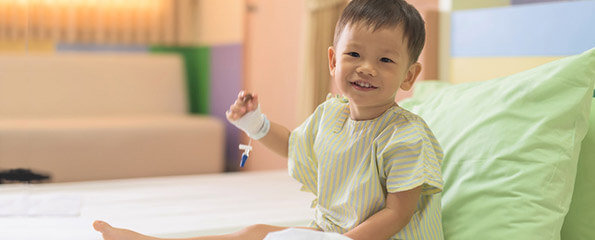The effects of childhood stroke on motor skills
Stroke is one of the top 10 causes of death in children, yet there is very little research around childhood stroke. Researchers from the Murdoch Children’s Research Institute (MCRI) have undertaken a first ever study to systematically evaluate motor function across a 12 month period, following the diagnosis of arterial ischaemic stroke (a stroke that is caused by a blood clot).
The longitudinal study looked at three groups of children – neonates (before 30 days), pre-school (30 days to five years) and school age (over five years to 18 years) and analysed their progress over four time points – acute, one month, six months and 12 months.
Researchers reviewed the 64 children involved in the study across these four time periods, looking primarily at how each child’s motor skills had been impacted by the stroke and their recovery. They also looked at the impact of motor impairments on their daily lives.
Stroke has traditionally been linked to older people and not to children; however it is quite common in children, particularly newborns. In fact, in their first week of life a term newborn has a stroke risk that is three times that of a hypertensive, smoking diabetic adult.
This study has clearly demonstrated that children who suffer a stroke require individualised care over a much longer period than adults who experience a stroke.
Lead researcher, Anna Cooper said they found that motor outcomes were different depending on what age the child had the stroke. “In babies, impairments tended to emerge over the first year, whereas in older children we saw an improvement.”
A stroke in the newborn period and later in childhood can have major implications for development that can lead to a lifetime of difficulties.
“The problems are quite similar to those seen in the elderly – motor, speech and cognitive impairments which limit children’s participation in normal daily activities such as school, sport and socialising – impacting them across their lifetime, even into adulthood,” Ms Cooper said.
Researchers didn’t find significant links between motor outcomes and the area or brain side of the lesion. There was also no difference if the child was a boy or a girl. This study does suggest that pre-school aged children may have the best motor outcomes and recovery potential.
Co-author MCRI Research Coordinator Mardee Greenham said that social and behavioural problems are also often not apparent in the early stages of recovery following a stroke so they may not be picked up by health professionals caring for these children.
“Our study found that social and behavioural problems begin to emerge at 6 and 12 months after stroke, highlighting the importance of monitoring children long-term. Social and behavioural difficulties are linked to long-term quality of life, mental health and academic success,” Ms Greenham said.
Children change developmentally as they grow, which means that unlike in adults when the best rehab stroke potential is in the first three to six months, children need to be monitored and assessed long-term.
“This longitudinal study is helping us to identify areas of need and showing us that we not only need to focus intervention. It’s also highlighted that there needs to be an individualised approach to care,” Ms Cooper said.
Researchers at MCRI are currently working on creating acute and sub-acute (when the patient is discharged from hospital need to go to rehab before they can go home) clinical guidelines for childhood stroke to establish a uniform practice for the diagnosis and care of childhood stroke.
The next stage of this study will be a follow up with the cohort at five years.
(Source: Murdoch Children’s Research Institute)
Dates
Tags
Created by:

 Login
Login














